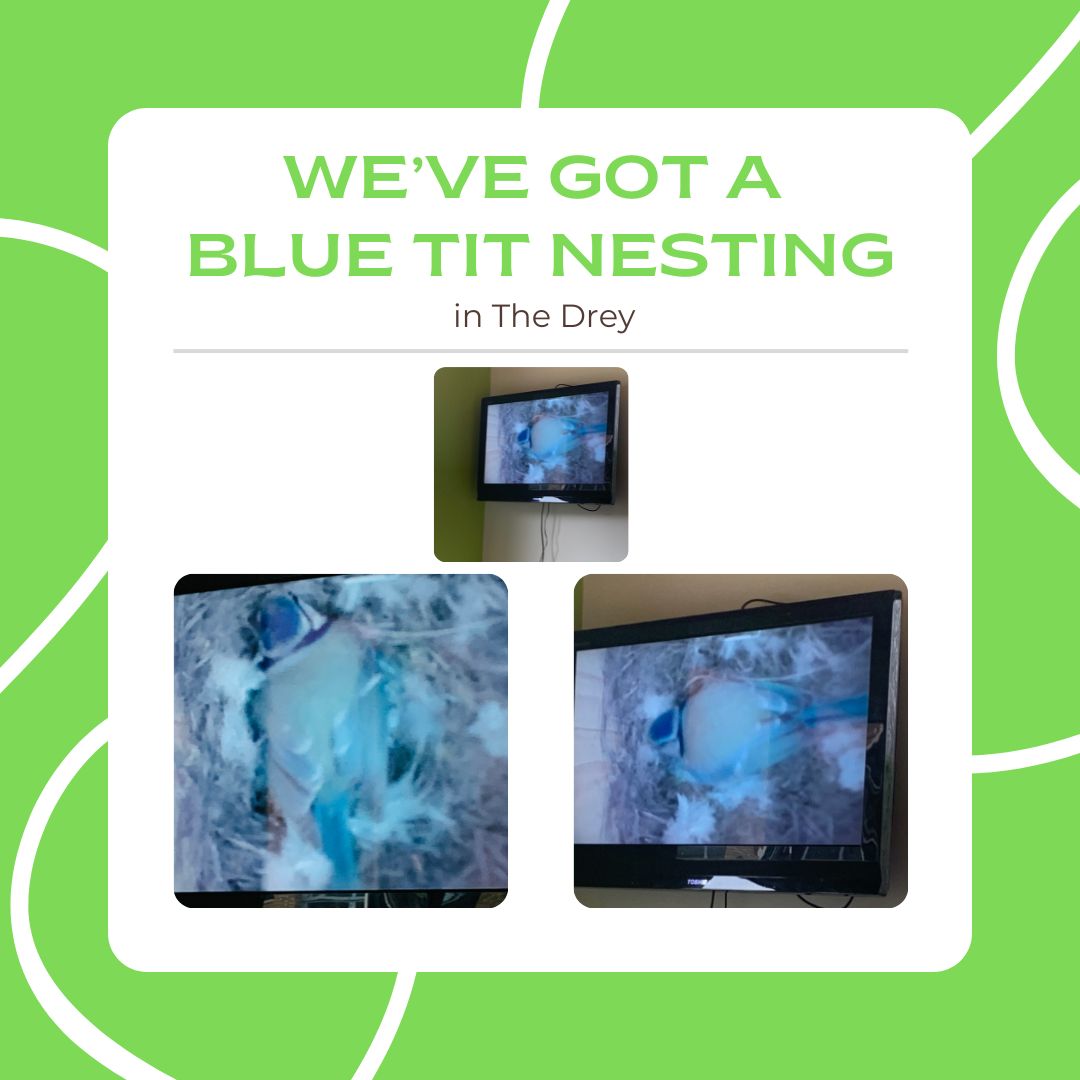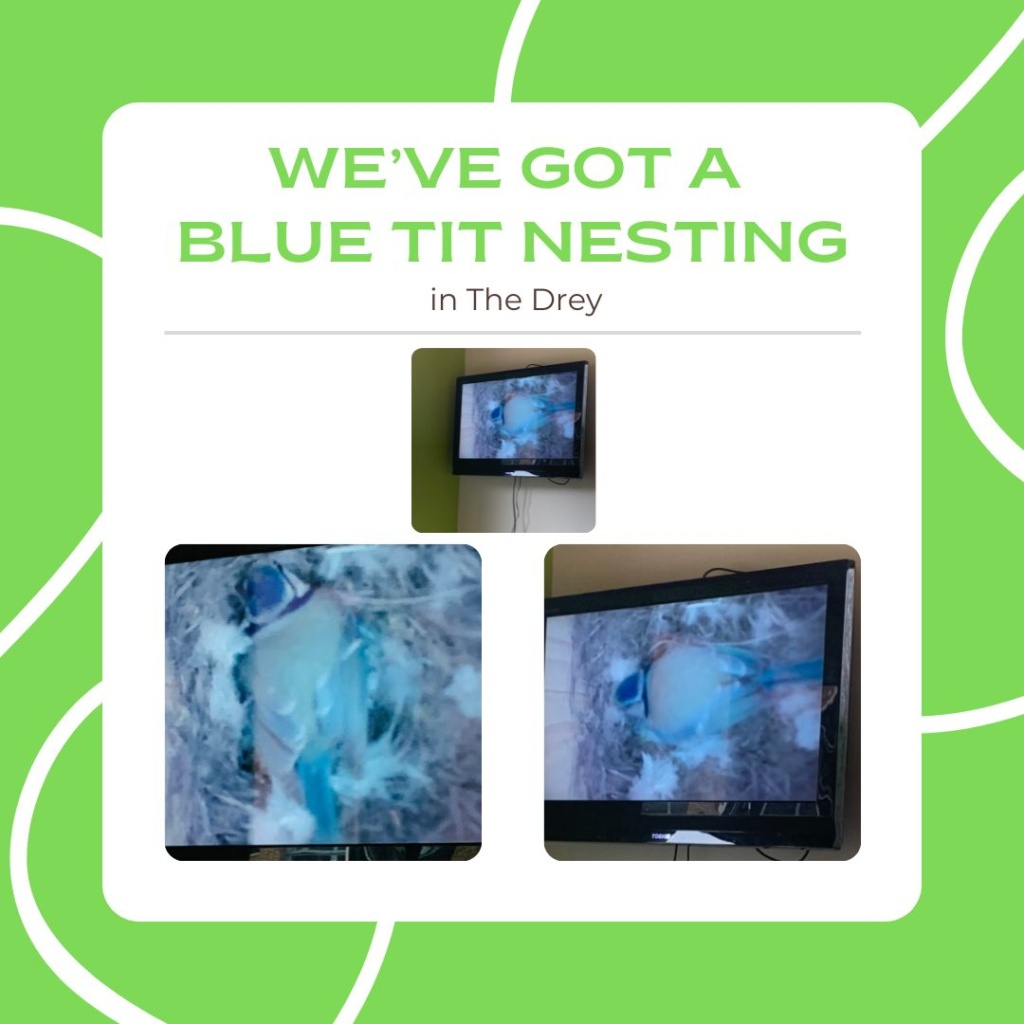
Some time ago, our school was gifted a special bird box. Last term, Mr Riley kindly installed it on The Drey, carefully attaching it with a web-cam so we could observe any visitors. For a while, it remained quiet—but recently, something magical has happened!
A couple of weeks ago, we spotted a few leaves inside the box. At first, we weren’t sure if they had blown in. But by the end of last week, we noticed more twigs and what looked like a cosy little seating area forming in the centre. Then, yesterday morning, we saw feathers inside—just a few at first, and by the end of the day, the box was filled with them!
We switched on the screen that the camera is connected to and were thrilled to discover that a blue tit is nesting in our box! It was such an exciting moment. It’s worth knowing that it can take some time—sometimes up to a year or more—for birds to settle into a new nesting box, so we feel incredibly lucky.
Our beautiful blue tit looks like she is getting ready to nest properly, and we’re hopeful that we may soon see eggs… and maybe even chicks!
To support this lovely development, Year 5 have been invited to set up a bird watch as part of their science learning. They’ll be journalling what they observe each day, helping us track the progress of our new feathered friend.
Fascinating Facts About Blue Tits
- Blue tits are small, colourful birds found across the UK.
- They build their nests from moss, wool, hair, feathers and other soft materials.
- A typical clutch contains between 7 and 12 eggs!
- Blue tits feed mainly on insects and caterpillars in spring and summer, and seeds and berries in winter.
- They are clever and adaptable, often seen performing acrobatic moves while feeding!
Why It Matters
Supporting wildlife in our school grounds is part of our wider commitment to caring for the planet and helping children connect with nature. Nesting boxes like ours offer a safe place for birds to raise their young, especially in areas where natural nesting spaces are in decline.
We’ll keep you posted as the nesting progresses. Fingers crossed for a successful hatching season!
